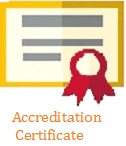The Potential of Swampland Microalgae as Nitrogen Provider
Abstract
Keywords
Full Text:
PDFReferences
Chittapun S, S Limbipichai, N Amnuaysin, R Boonkerd and M Charoensook. 2017. Effects of using cyanobacteria and fertilizer on growth and yield of rice, Pathum Thani I: a pot experiment. Appl Phycol 30: 79-85. doi: 10.1007/s10811-017-1138-y.
Danapriatna N. 2010. Biokimia penambatan nitrogen oleh bakteri non simbiotik. Agribisnis dan Pengembangan Wilayah 1: 1-10. (in Indonesian).
Djaenudin UD. 2009. Prospek penelitian potensi sumber daya lahan di wilayah Indonesia 1). Pengembangan Inovasi Pertanian 2: 243-257. (in Indonesian).
Fachrullah MR. 2011. Laju pertumbuhan mikroalga penghasil biofuel jenis Chlorella sp. dan Nannochloropsis sp. yang dikultivasi menggunakan air limbah hasil penambangan timah di pulau bangka. [Skripsi]. Institut Pertaian Bogor. Bogor. (in Indonesian).
Fadilah R and HD Ariesyady. 2013. Analisis kelimpahan dan keragaman mikroalga di kolam stabilisasi instalasi pengolahan air limbah berdasarkan analisis biologi konvensional dan molekuler. [Tesis]. Institut Teknologi Bandung. Bandung. (in Indonesian).
Kasrina S, Irawati and WE Jayanti. 2012. Ragam jenis mikroalga di air rawa Kelurahan Bentiring Permai Kota Bengkulu sebagai alternatif sumber belajar biologi SMA. Exacta X : 36-44. (in Indonesian).
Kim JD and CG Lee. 2006. Diversity of heterocystous filamentous cyanobacteria (blue-green-algae) from rice paddy field and their differential susceptibility to ten fungicides used in Korea. Microbiol Biotechnol 16: 240-246.
Nain L, A Rana, M Joshi, SD Jadhav, D Kumar, YS Shivay, S Paul and R Prasanna. 2010. Evaluation of synergistic effects of bacterial and cyanobacterial strains as biofertilizers for wheat. Plant Soil 331: 217-230. doi:10.1007/s11104-009-0247-z.
Nilsson M, J Bhattacharya, AN Rai and B Bergman. 2002. Colonization of root of rice (Oryza sativa L.) by simbiotic Nostoc strains. New Phytol 156: 517-525. doi:10.1046/j.1469-8137.2002.00534.x.
Prabowo DA. 2009. Optimasi pengembangan media untuk pertumbuhan Chlorella sp. pada skala laboratorium. [Skripsi]. Institut Pertanian Bogor. Bogor. (in Indonesian).
Prihantini NB, B Putri and R Yuniati. 2005. Pertumbuhan Chlorella spp. dalam medium ekstrak tauge (met) dengan variasi pH awal. Makara Sains 9: 1-6. doi: https://doi/org/10.7454/mss.v9i1.457. (in Indonesian).
Rai MK. 2006. Handbook of Microbial Biofertilizers. Haworth press. New York, pp/ 435-436.
Riffiani R. 2010. Penggunaan mikroalga Chlorella pyrenoidosa chick amobil untuk meningkatkan kualitas air dalam akuakultur. Hidrosfir Indonesia 5: 25-33 (in Indonesian).
Sari WE. 2011. Isolasi dan identifikasi mikroalga Cyanophyta dari tanah persawahan Kampung Sampora, Cibinong, Bogor. [Skripsi]. UIN Syarif Hidayatullah. Jakarta (in Indonesian).
Soeprobowati TR. 2010. Stratigrafi diatom danau rawa pening : kajian paleolimnologi sebagai landasan pengelolaan danau. Makalah Seminar Nasional Limnologi V. Pusat Penelitian Limnologi – LIPI. Bogor (in Indonesian).
Susanti ET, M Lutfi and WA Nugroho, 2013. Pengaruh penambahan plant-growth promoting bacteria (Azospirillum sp.) terhadap laju pertumbuhan mikroalga (Chlorella sp.) pada media limbah cair tahu sintetis. Keteknikan Pertanian Tropis dan Biosistem 1: 239-248 (in Indonesian).
Tamad. 2002. Pengaruh urea dan Azolla sebagai tanaman penutup pada budidaya padi sawah tanah berkapur di sekitar Kupang, Timor, NTT. Berita Biologi 6: 515-520 (in Indonesian).
Widianingsih A, Ridho, R Hartati and H Oko. 2008. Kandungan nutrisi Spirulina platensis yang dikultur pada media yang berbeda. Ilmu Kelautan 13: 167-170 (in Indonesian).
Widiawati. 2017. Potensi pemberian kompos briket dan remah terhadap N tanah dan tanaman serta pertumbuhan padi beras merah dengan sistem penanaman jajar legowo 2.1 di lahan sawah lebak. [Skripsi]. Universitas Sriwijaya. Palembang (in Indonesian).
Wijaya TS and R Hariyati. 2011. Struktur komunitas fitoplankton sebagai bio indikator kualitas perairan danau Rawa Pening Kabupaten Semarang Jawa Tengah. Anatomi Fisiologi XIX: 55-61. doi: https:/doi.org/10.14710/baf.v19i1.2584 (in Indonesian)
DOI: http://dx.doi.org/10.5400/jts.2018.v23i3.125-131
Refbacks
- There are currently no refbacks.
INDEXING SITE
This work is licensed under a Creative Commons Attribution 4.0 International License.

















